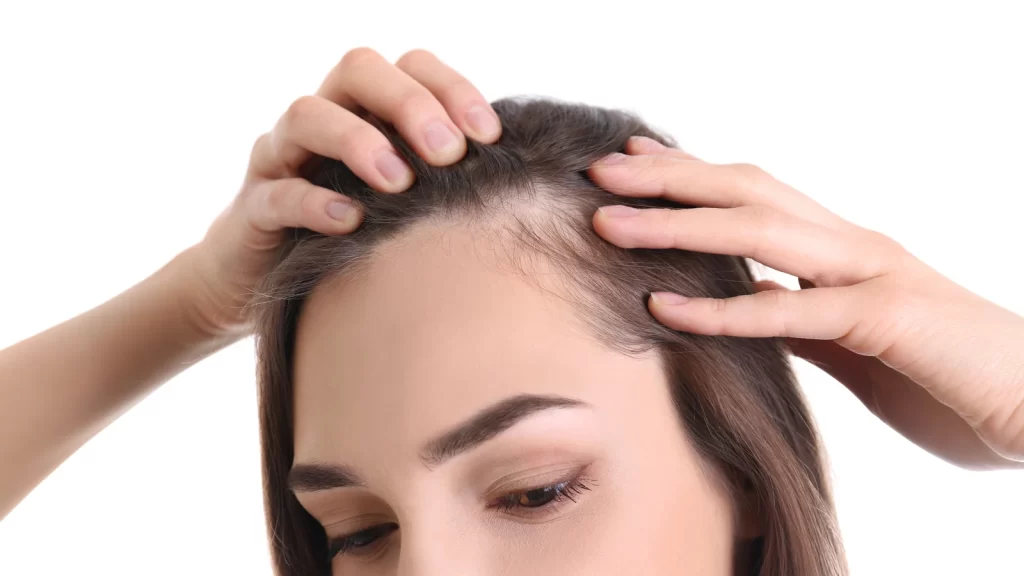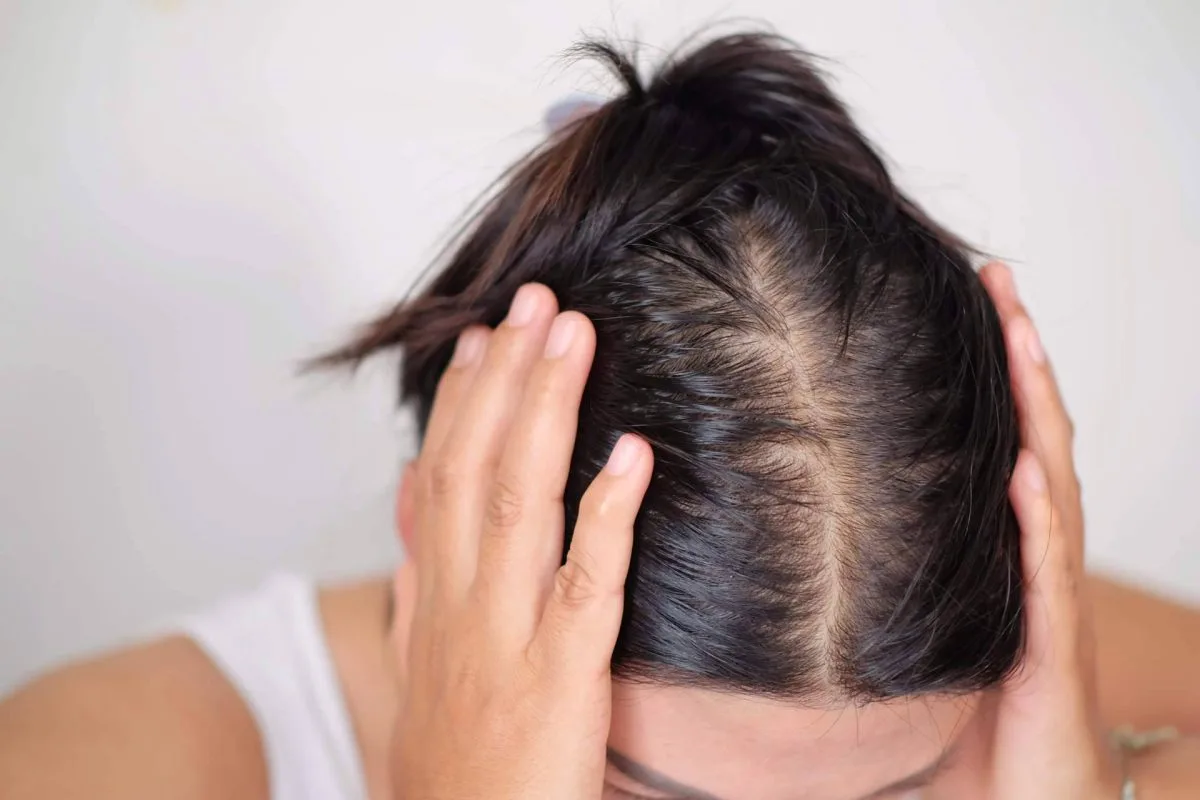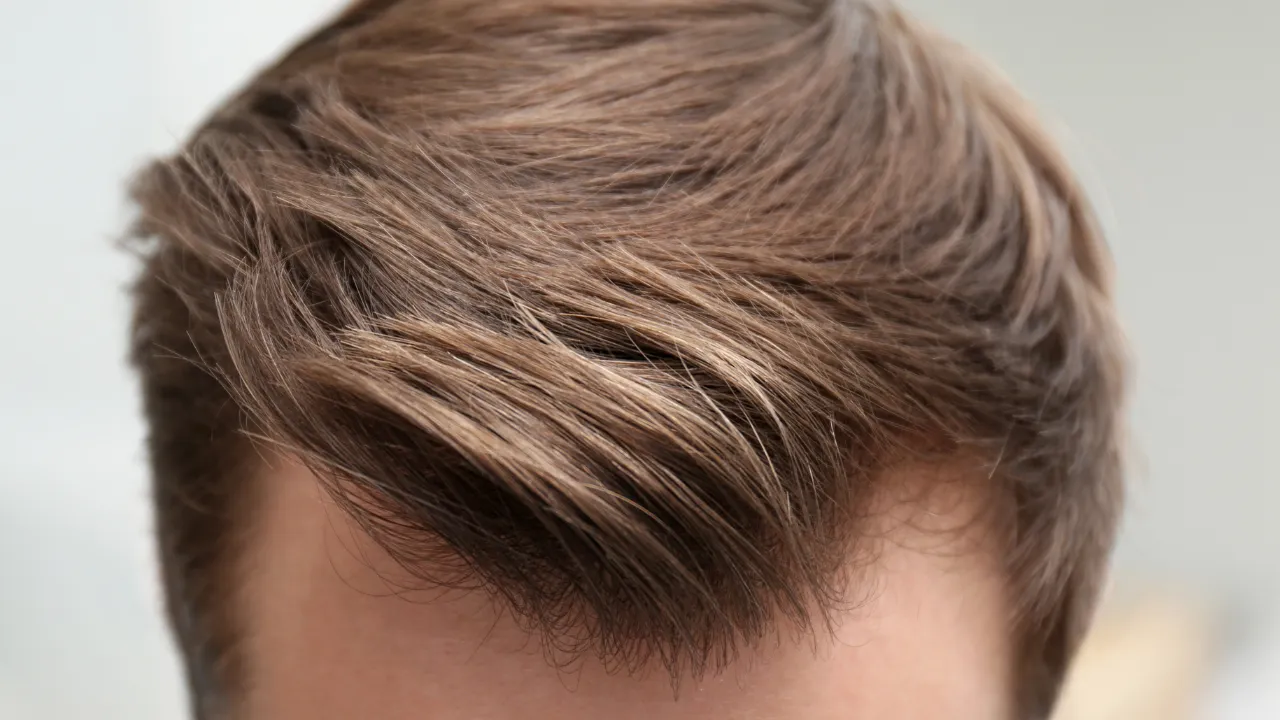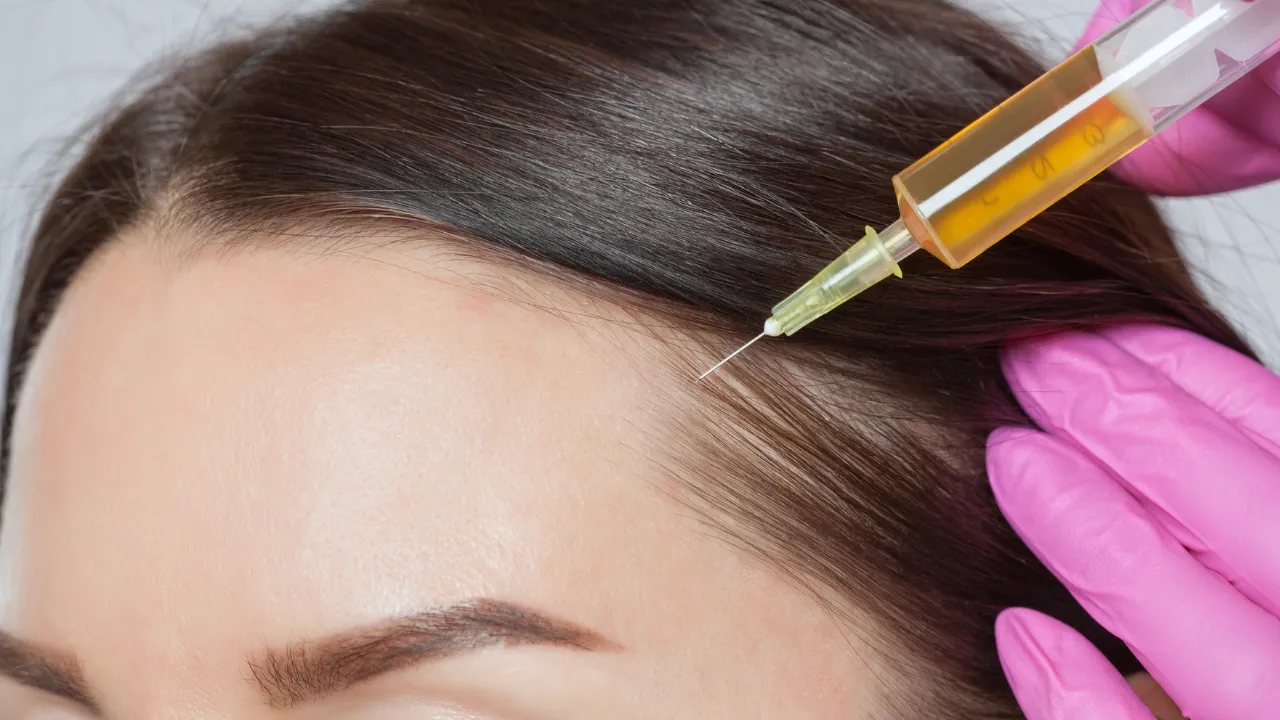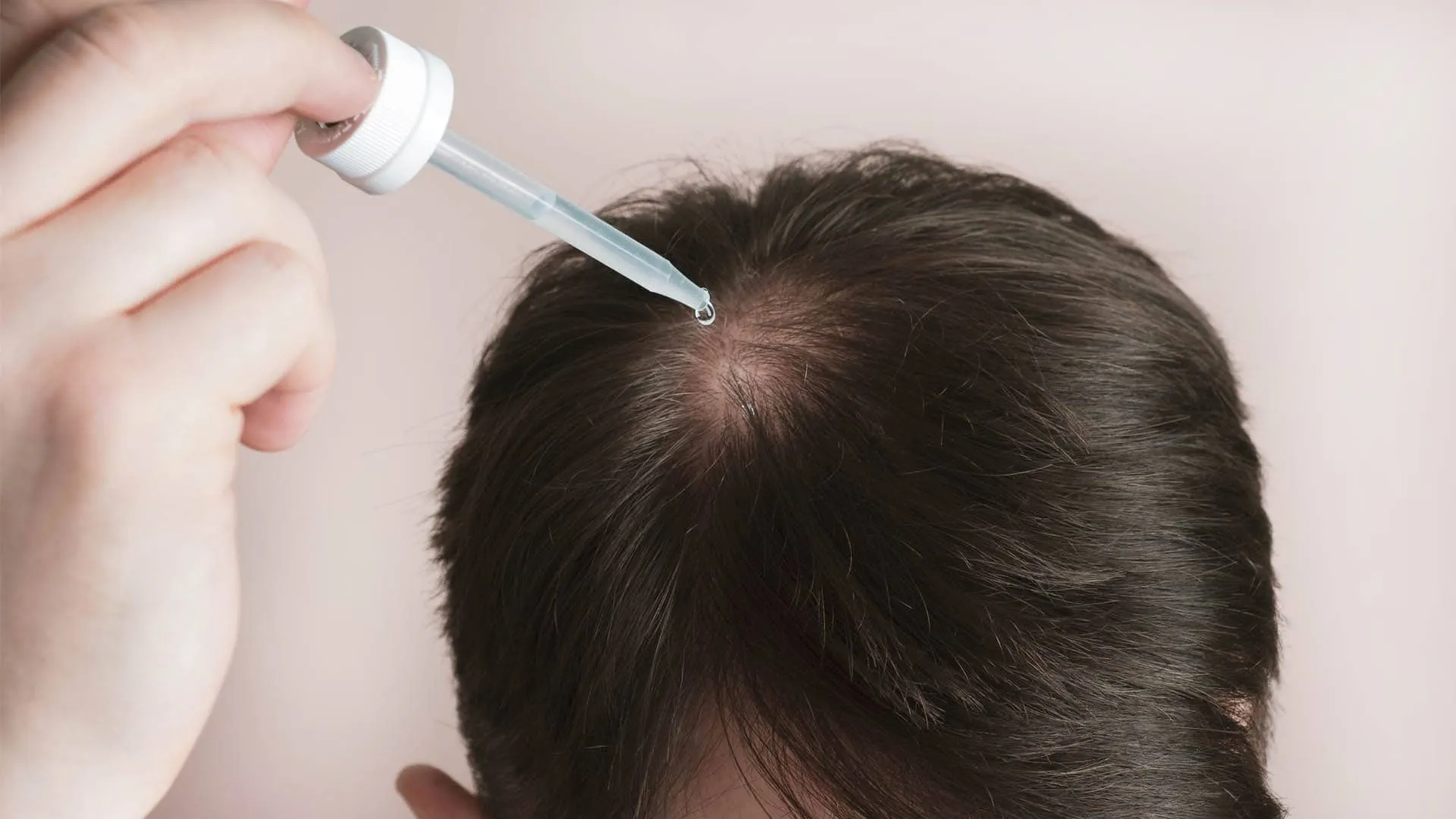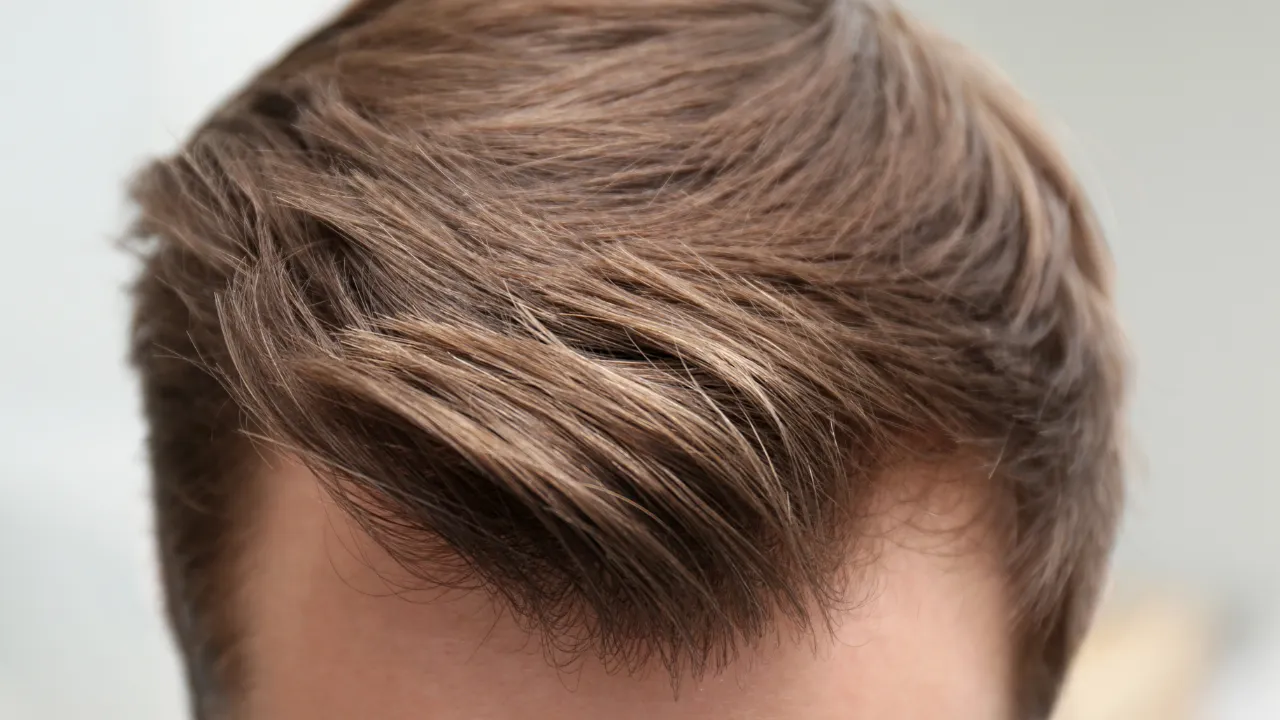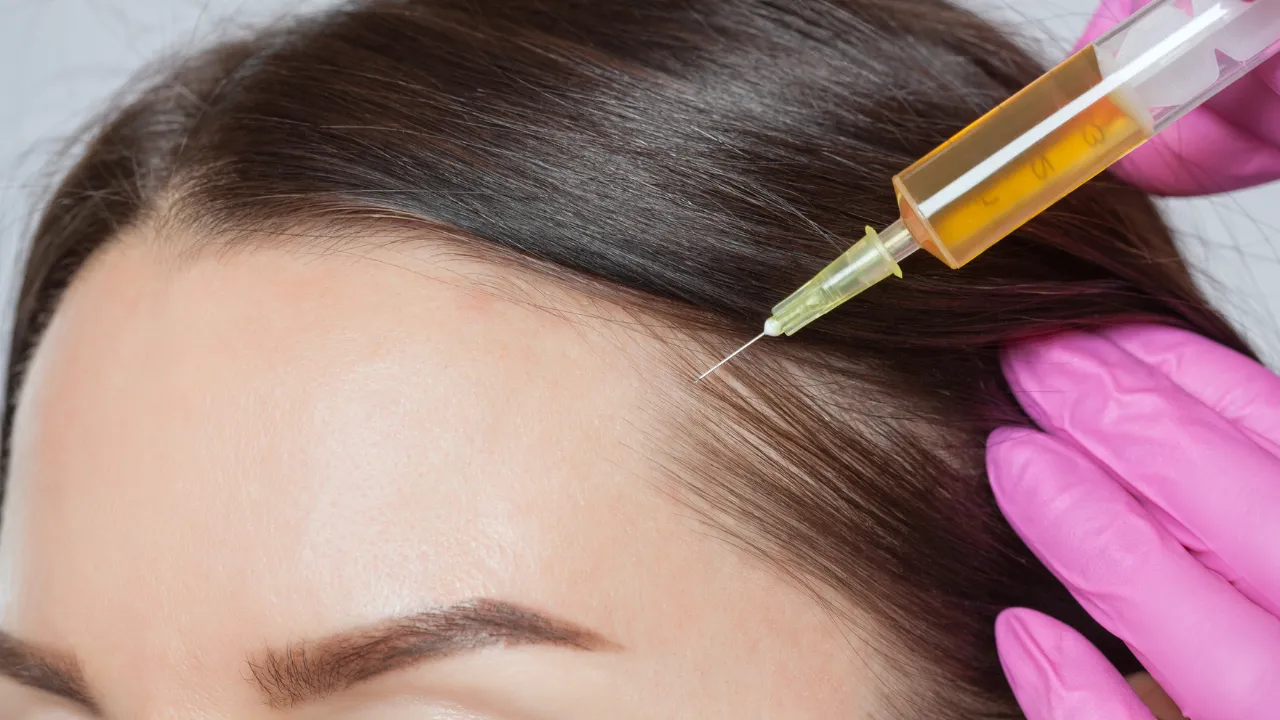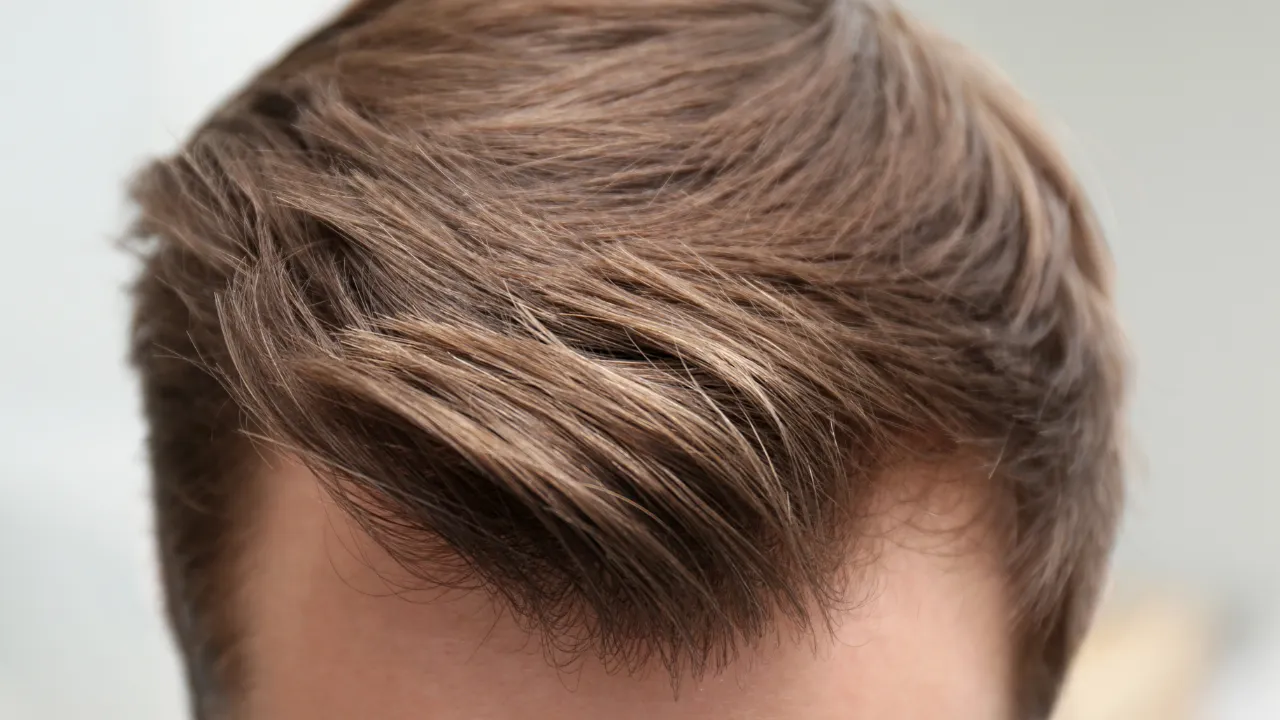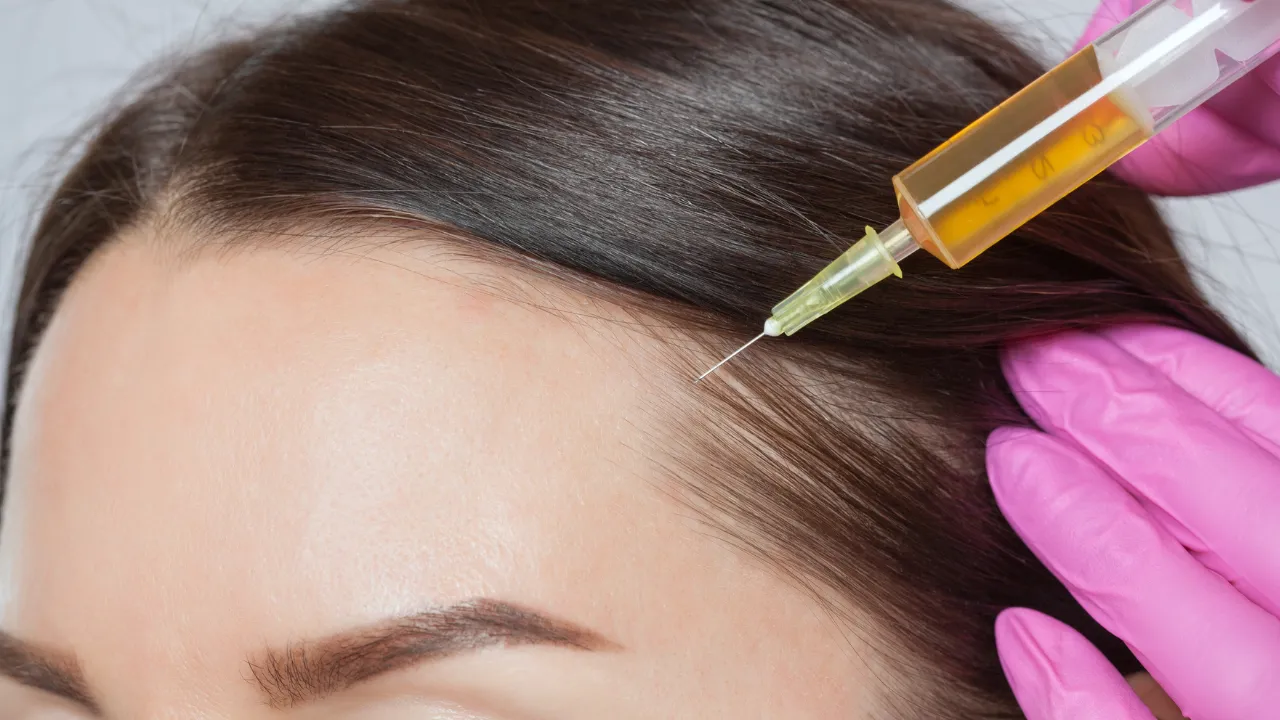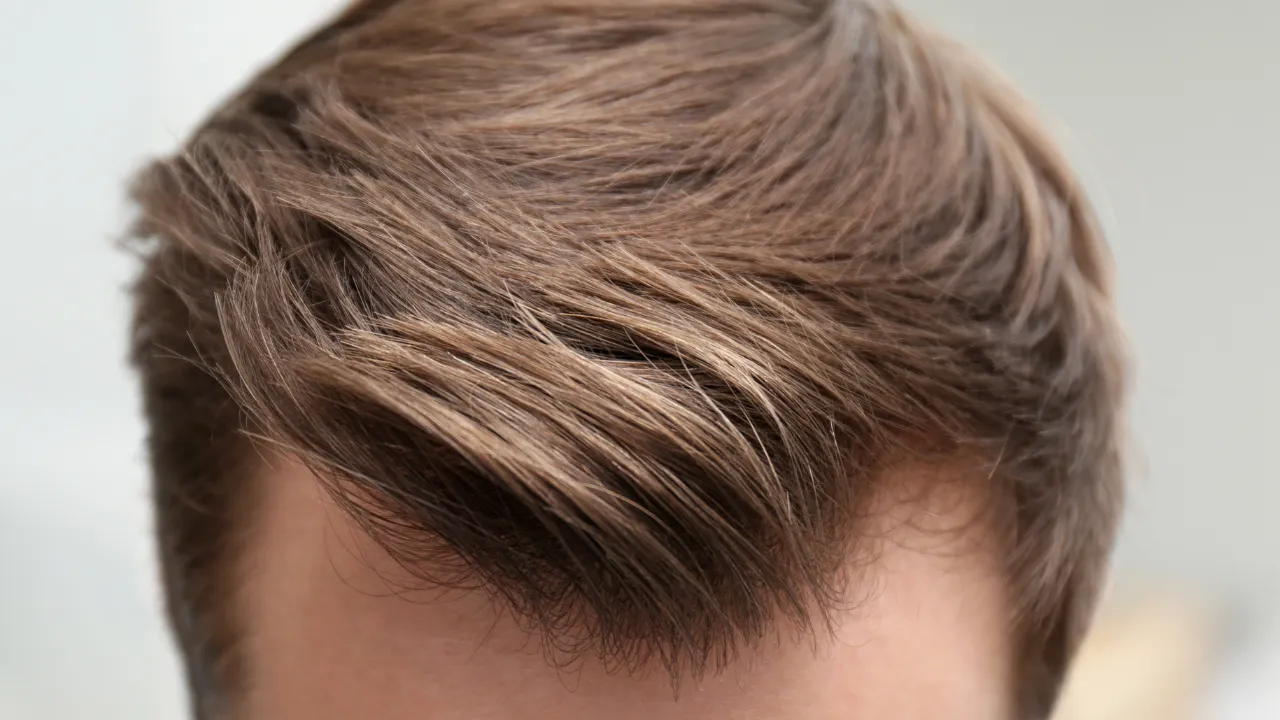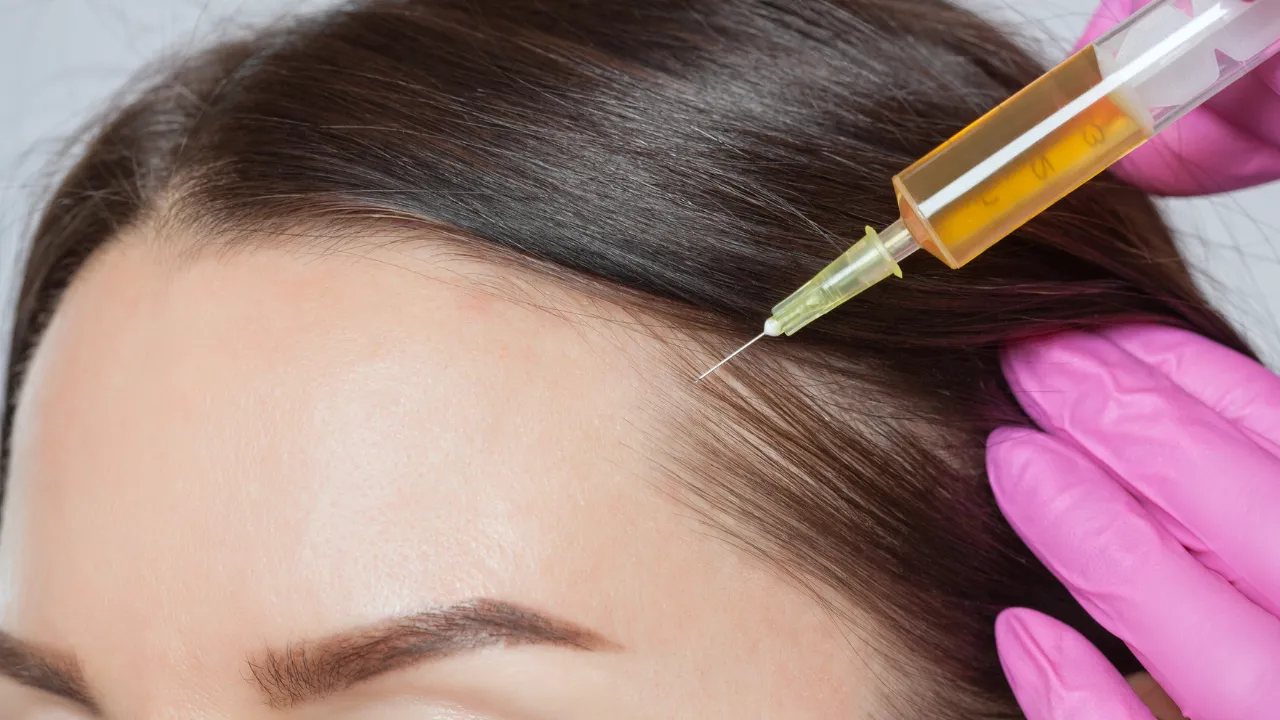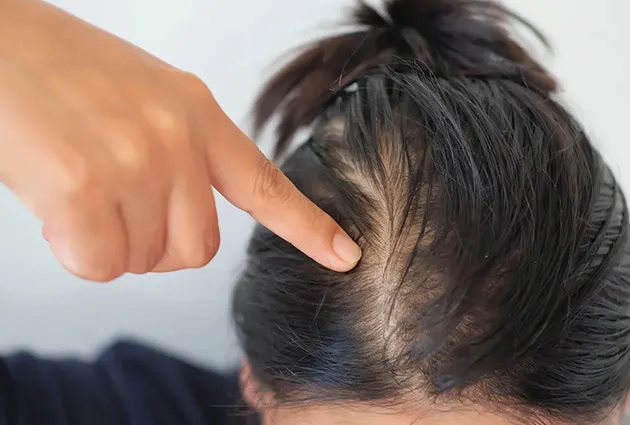Table of Contents
ToggleAt Kopelman Hair, we understand that patients often search for pictures of telogen effluvium to better recognize this temporary form of hair loss. Seeing real examples helps people identify patterns of shedding and know when it may be time to seek professional advice.
By reviewing photos of telogen effluvium, you can compare common signs with your own experience. This guide explains what the condition looks like, why it happens, and how recovery appears over time, with expert input from Dr. Kopelman.
Key Takeaways
- Telogen effluvium is a temporary condition where stress, illness, or medications cause diffuse hair shedding across the scalp.
- Pictures of telogen effluvium typically show thinning hair with visible scalp but no scarring or patchy bald spots.
- Most patients notice early regrowth within 3 to 4 months, with full recovery usually achieved in 6 to 9 months if the trigger is resolved.
- Medical evaluation by an expert like Dr. Kopelman helps confirm the diagnosis, identify underlying causes, and guide treatment options ranging from lifestyle changes to medical therapies.
What Is Telogen Effluvium?
Telogen effluvium is a temporary shedding condition triggered by stress, illness, or hormonal shifts. Instead of shedding 50 to 100 hairs daily, patients may see much more.
The shedding usually begins a few months after the trigger and often reverses once the cause is corrected. Medical guidance ensures proper diagnosis and treatment.
At Kopelman Hair, Dr. Kopelman has managed many cases of telogen effluvium over his 40 years of practice. His expertise in surgical and non-surgical hair restoration provides patients with reliable guidance.
What Telogen Effluvium Looks Like
Pictures of Hair and Scalp
Images of telogen effluvium show diffuse thinning rather than bald patches. The scalp is visible along the crown or part, unlike alopecia areata, which creates round spots. These images are important to distinguish it from other types of hair loss.
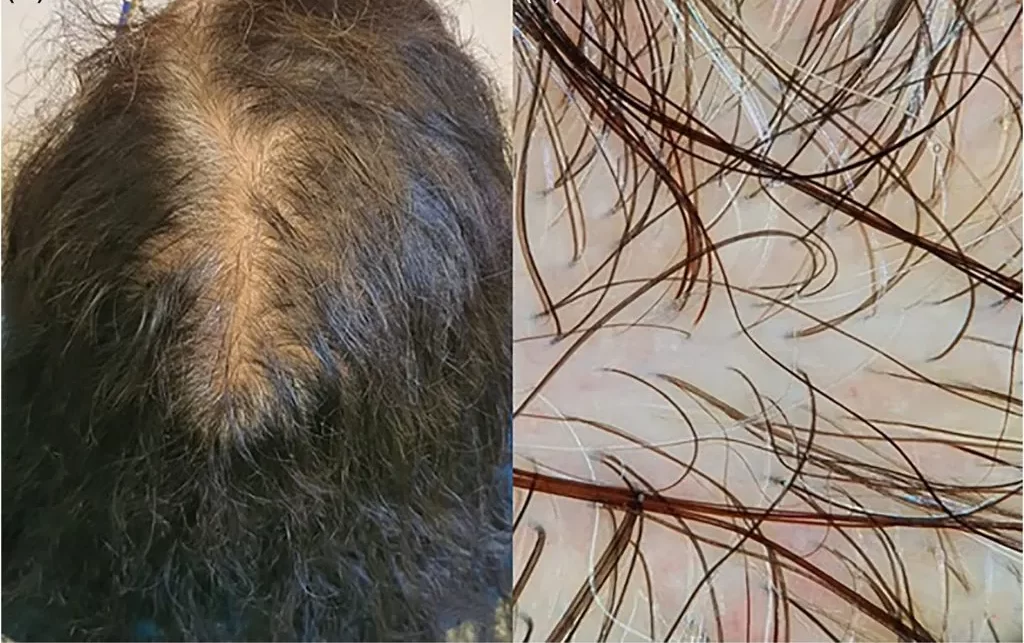
Telogen Effluvium in Men and Women
Photos of telogen effluvium in men show thinning across the top and temples. Women often see reduced volume at the crown and widening of the part. Both patterns are temporary.
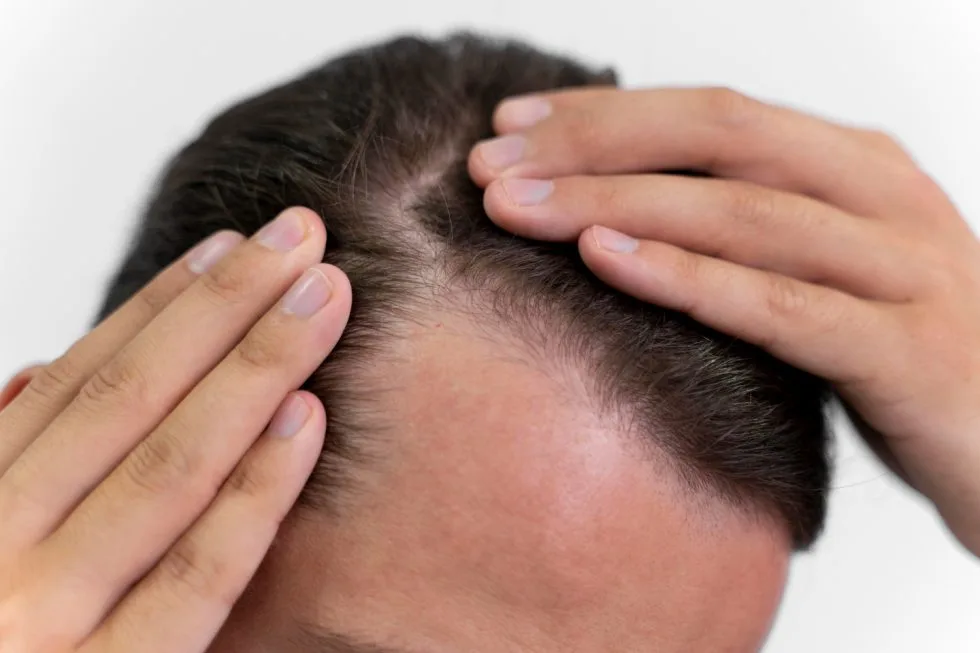
Early and Advanced Cases
Early cases show subtle thinning. Advanced photos reveal heavier loss with more scalp visibility. Most patients stabilize and regrow within months.
Before-and-after photos in practice highlight reduced shedding and early regrowth. A recovery timeline often shows:
- 3 months – baby hairs appear
- 6 months – density improves
- 9–12 months – thickness returns
Diagnosis and Symptoms
Images in Diagnosis
Doctors sometimes use scalp photos to monitor changes. Images confirm diffuse shedding rather than patchy or scarring loss.

Key Symptoms to Recognize
Common signs include:
- Excess hair in drains or on pillows
- Diffuse thinning
- No scarring or redness
- Sudden shedding after illness or stress
How Telogen Effluvium Differs from Other Hair Loss
Alopecia areata causes bald patches, and male pattern baldness thins at the temples or crown. Telogen effluvium, by contrast, shows diffuse shedding with no scarring. Comparing images helps clarify differences between these types of hair loss.
Causes of Telogen Effluvium
Doctors may use a “pull test” or trichoscopy to diagnose shedding patterns. Medical triggers include medications such as beta-blockers, retinoids, and chemotherapy drugs. Thyroid issues and major surgery are also linked.
Other common causes are:
- Severe stress or trauma
- Illness with high fever
- Postpartum hormone shifts
- Iron or vitamin D deficiencies
Hair Regrowth and Recovery
Pictures of Hair Regrowth
Photos of regrowth show fine new hairs along the hairline or part. These thicken gradually over months.
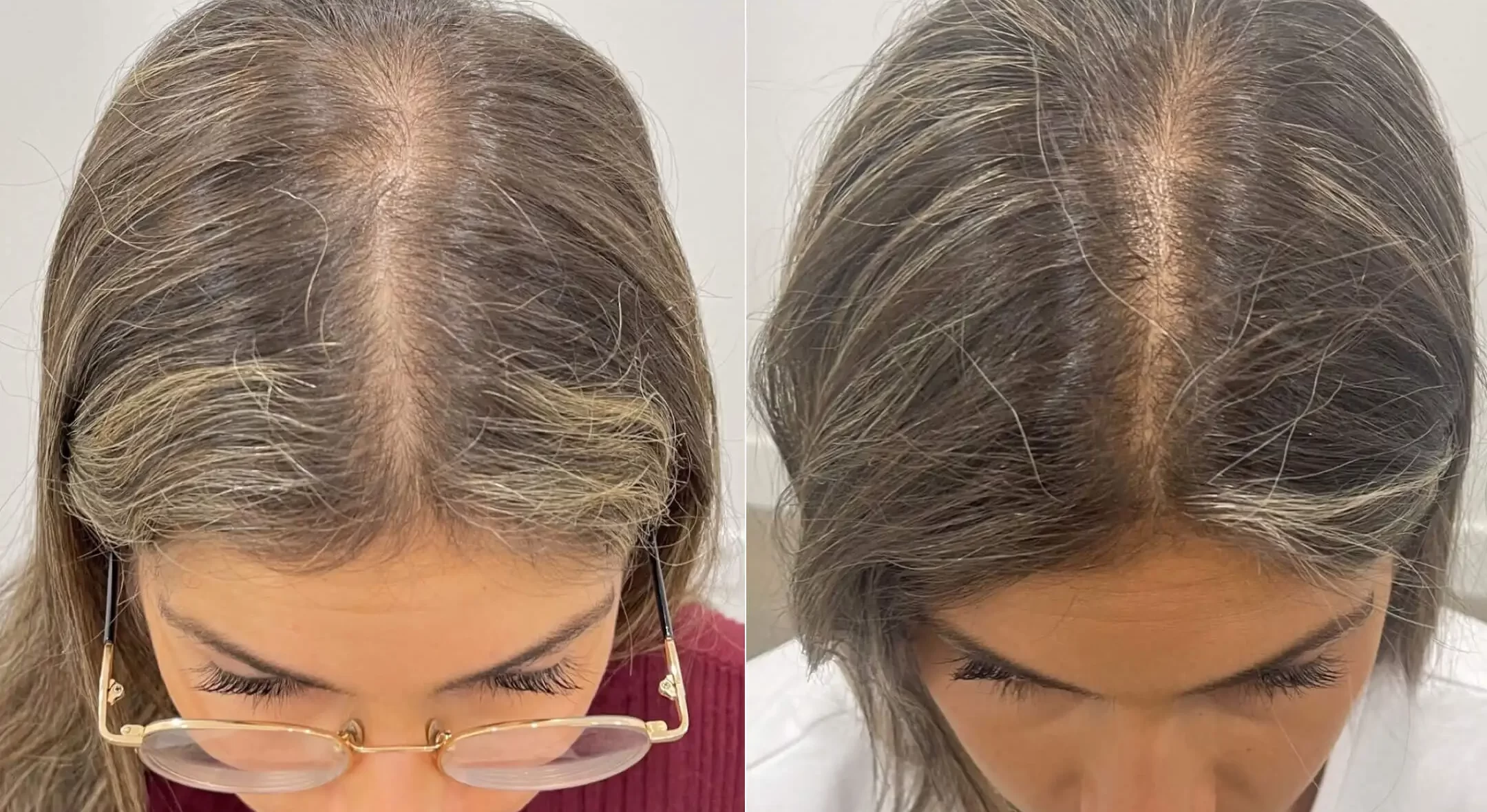
Signs of Hair Regrowth and Recovery
Recovery signs include reduced shedding and visible baby hairs. Many patients notice density returning within 6 to 9 months.
Most cases resolve once the trigger is addressed. Shedding slows within 3 months, with regrowth soon after. Chronic cases lasting more than a year are less common.
Before-and-after photos usually show reduced shedding and gradual thickening. At 3 months, baby hairs emerge, at 6 months, density increases, and by 9–12 months, full coverage often returns.
Treatment Options
Pictures of Telogen Effluvium Treatment
Treatment photos show improvements once the trigger is addressed and therapy begins.
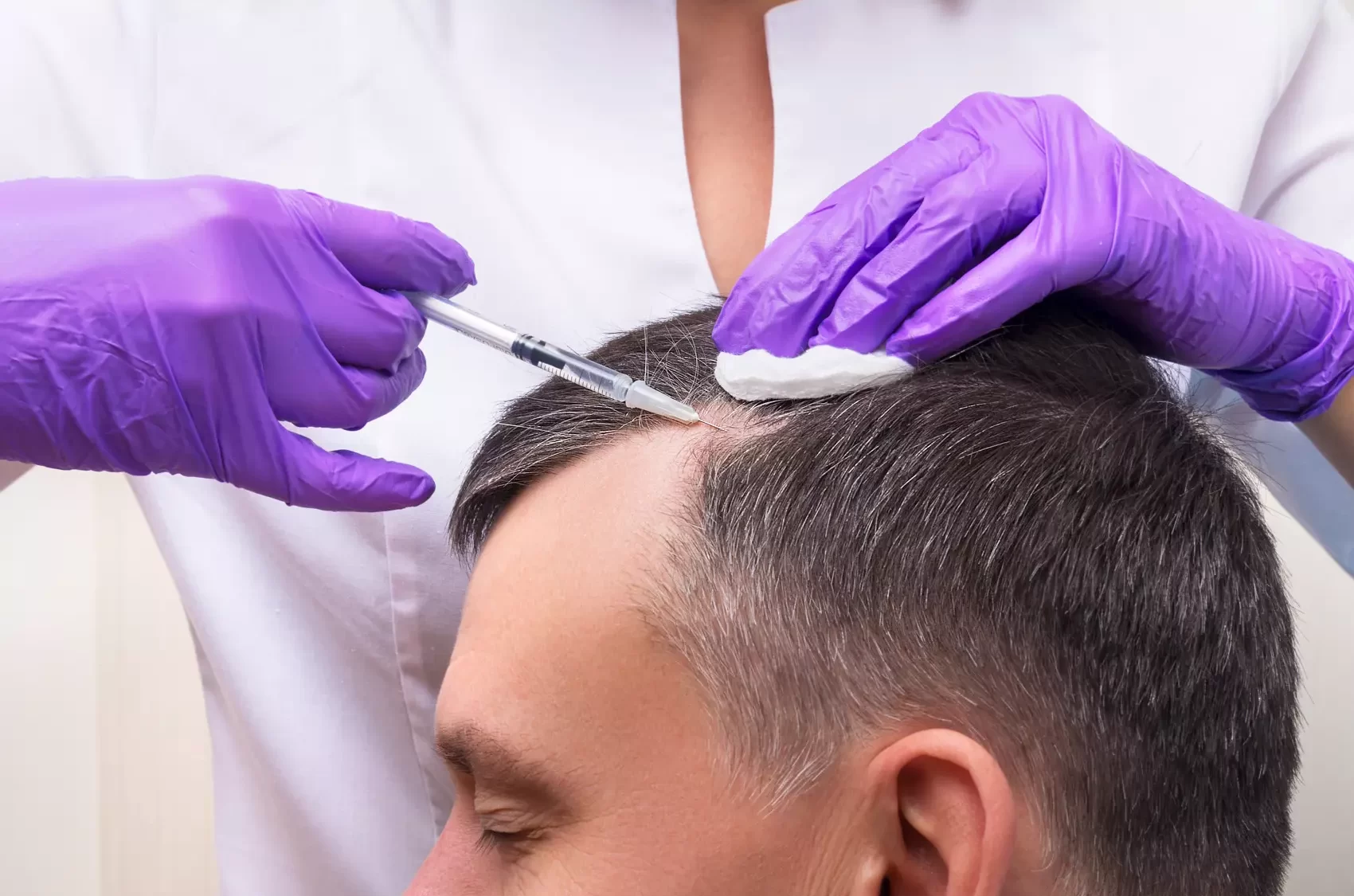
Medical Treatments
Options may include topical minoxidil, PRP injections, or supplements. These speed recovery and strengthen regrowth.
Home Care and Lifestyle Changes
Balanced nutrition, stress management, and gentle care improve scalp health. Avoiding tight hairstyles also helps.
Prevention Tips
Prevention steps include:
- Eating protein, iron, and vitamin-rich foods
- Managing stress
- Avoiding harsh chemical treatments
- Keeping the scalp clean
- Routine health checkups
When to See a Specialist
If shedding lasts beyond six months or appears patchy, seek evaluation. At Kopelman Hair, Dr. Kopelman provides diagnostics and personalized treatment.
FAQs on Telogen Effluvium
Is telogen effluvium permanent?
No, it is usually temporary and reversible.
How long does recovery take?
Most patients regrow hair within 6 to 9 months.
Can telogen effluvium be prevented?
Stress control, good nutrition, and routine health care reduce risks.
Can it turn into permanent hair loss?
In most cases no, but it may overlap with other conditions requiring treatment.
How do doctors test for telogen effluvium?
They may use a pull test or trichoscopy to assess shedding and scalp hair health.
Ready to Take the Next Step?
If you are noticing shedding or changes in your scalp hair, Kopelman Hair can help. Schedule a consultation with Dr. Kopelman to explore personalized solutions.


